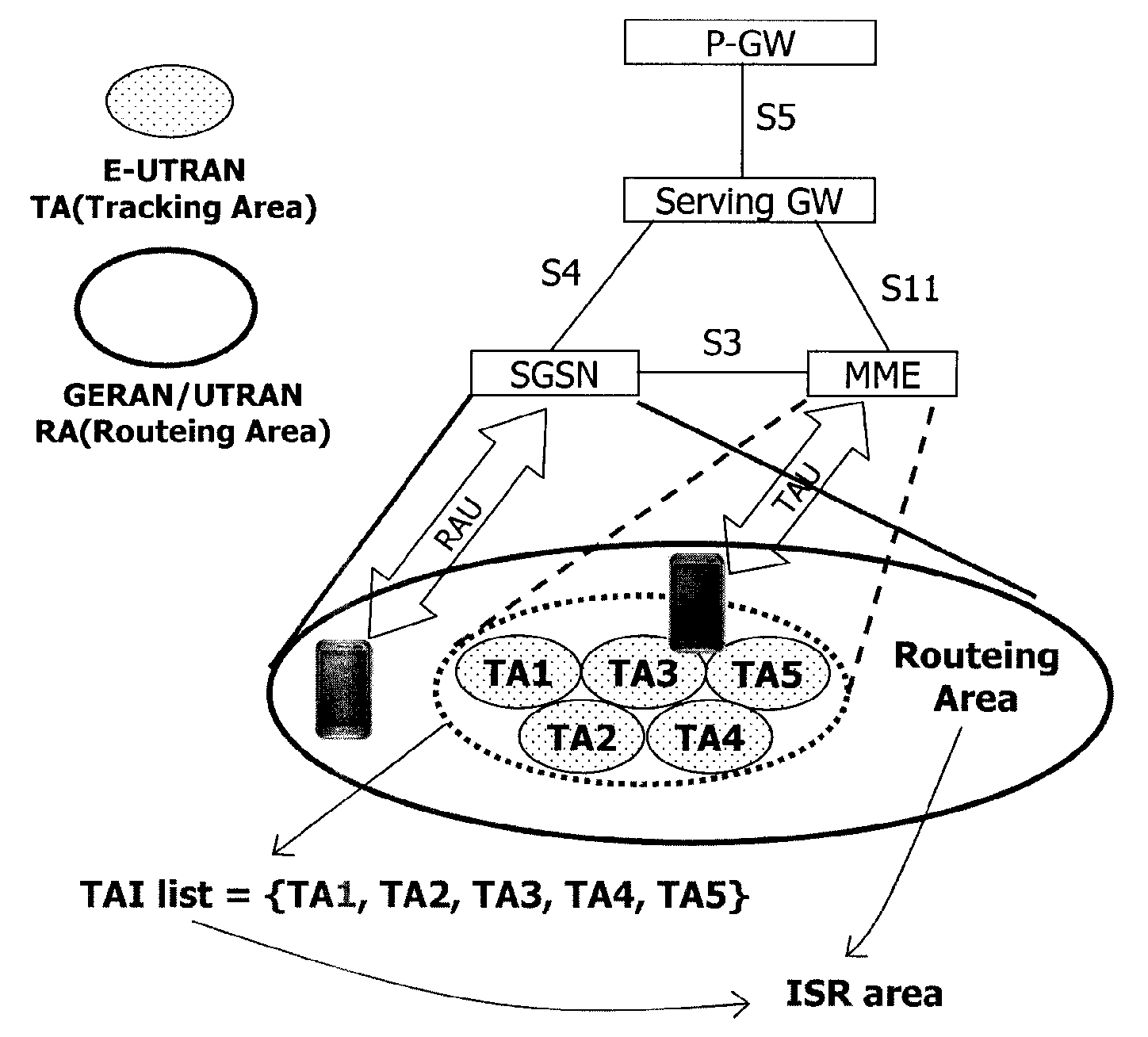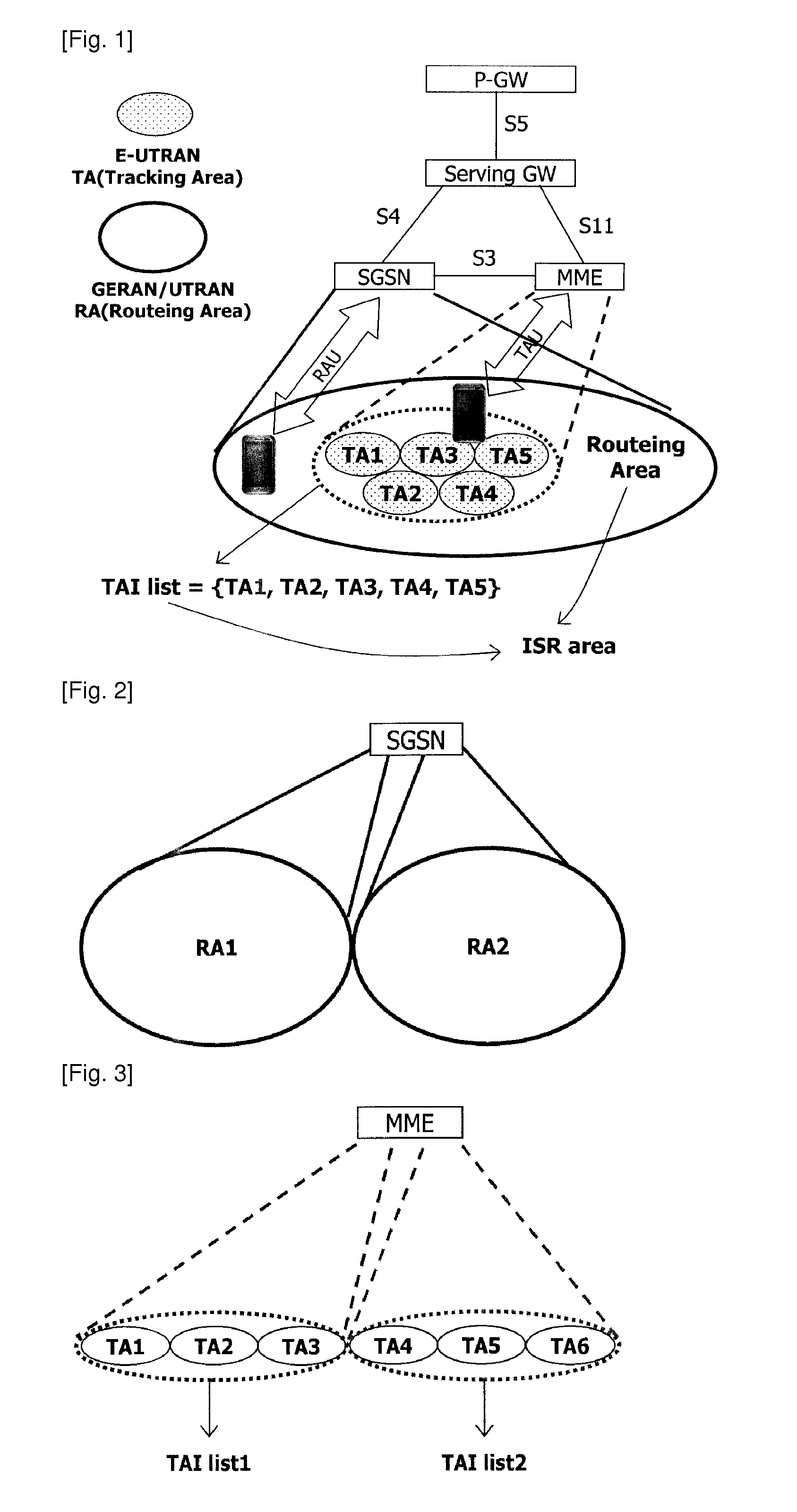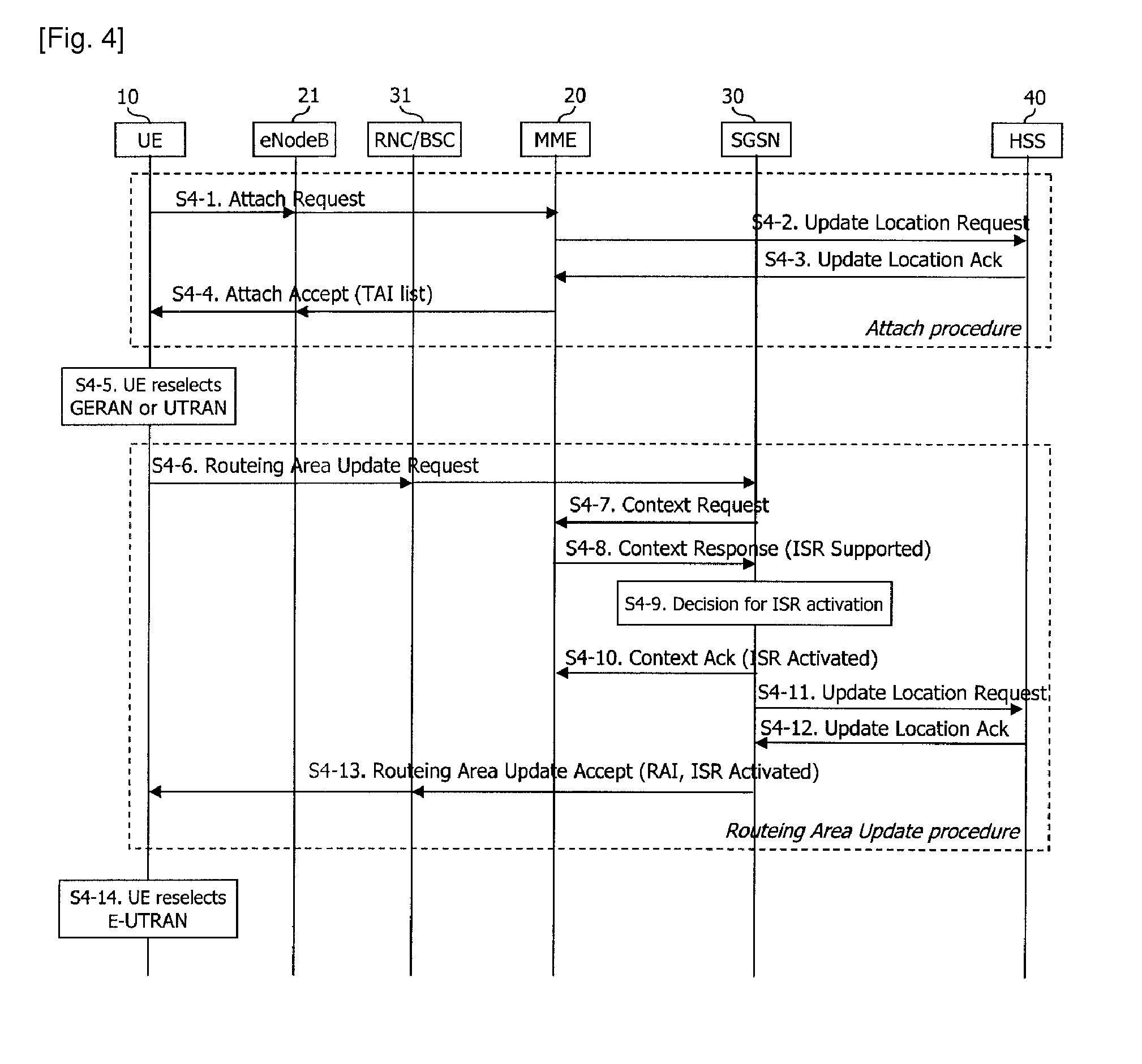Method for determining isr deactivation in mobile communications system
a mobile communications system and deactivation method technology, applied in the field of mobile communications systems, can solve the problems of increased critical factor of voice call services, increased call setup delay, waste of network resources, etc., and achieve the effect of reducing unnecessary signaling, enhancing network resource efficiency, and reducing signaling
- Summary
- Abstract
- Description
- Claims
- Application Information
AI Technical Summary
Benefits of technology
Problems solved by technology
Method used
Image
Examples
first embodiment
[0211]In FIG. 13, the UE initially performs location registration on the E-UTRAN (i.e., Attach procedure) (S13-1˜S13-4), moves to perform location registration on the first cell (served by the SGSN) of the UTRAN (or GERAN) (S13-5˜S13-13), and then camps on the second cell (served by the same SGSN) of the UTRAN (or GERAN) (S13-14˜S13-17). In case of the conventional intra-SGSN mobility, when the UE camps on the second cell after moving out from the first cell where both cells are served by same SGSN, an activated ISR feature for the UE is kept without considering whether IMS voice over PS session can be supported in the second cell. On the other hand, in case of intra-SGSN mobility according to FIG. 13, it is determined to keep or deactivate an activated ISR feature by checking whether a new ISR area to which the cell the UE has moved into belongs is a homogeneous ISR area (S13-15˜S13-17). Hereinafter, a method for determining ISR deactivation in case of intra-SGSN mobility according...
second embodiment
[0259]the present invention will be explained with reference to FIG. 14.
[0260]FIG. 14 is implemented with the following assumptions.
[0261]1) The UE uses voice over IMS;
[0262]2) As the UE 10 moves to another E-UTRAN cell (‘second cell’) from one E-UTRAN cell (‘first cell’), the UE performs location registration on the MME. Here, the previously location-registered MME and the newly location-registered MME are same (i.e., intra-MME mobility);
[0263]3) There is no change of the Serving GW by the UE's intra-MME mobility;
[0264]4) The GERAN or UTRAN and the E-UTRAN cell (first cell) reselected as the UE has moved from the GERAN or UTRAN do not support IMS voice over PS session, whereas the E-UTRAN cell (second cell) on which the UE camps due to intra-MME mobility supports IMS voice over PS session.
[0265]The first embodiment of FIG. 13 relates to intra-SGSN mobility, and the technical concepts of the present invention explained with reference to FIG. 13 can be applied to the second embodimen...
PUM
 Login to View More
Login to View More Abstract
Description
Claims
Application Information
 Login to View More
Login to View More - R&D
- Intellectual Property
- Life Sciences
- Materials
- Tech Scout
- Unparalleled Data Quality
- Higher Quality Content
- 60% Fewer Hallucinations
Browse by: Latest US Patents, China's latest patents, Technical Efficacy Thesaurus, Application Domain, Technology Topic, Popular Technical Reports.
© 2025 PatSnap. All rights reserved.Legal|Privacy policy|Modern Slavery Act Transparency Statement|Sitemap|About US| Contact US: help@patsnap.com



